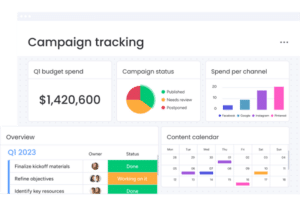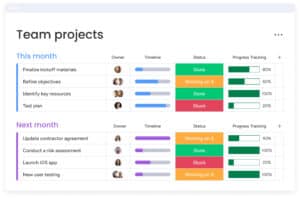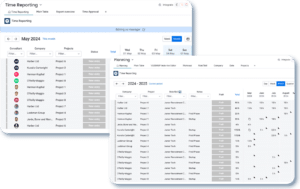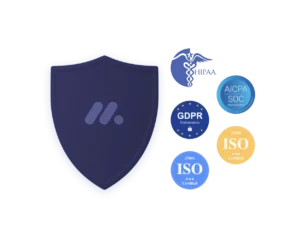Introduction
Why is Diversity and Inclusion Crucial in Today’s Workforce?
In an increasingly globalized world, workplace diversity has become more than just a buzzword; it’s a business imperative. Companies are starting to recognize that having a diverse and inclusive environment is not merely ‘nice-to-have,’ but essential for driving innovation, boosting productivity, and fostering a cohesive work atmosphere. While achieving diversity and inclusion can be a milestone, maintaining it is a continuous journey. Let’s go through some actionable strategies for maintaining workplace diversity and inclusion.
The Obstacles Businesses Face
Despite the clear advantages, creating and sustaining a diverse and inclusive workspace comes with its set of challenges. From ingrained cultural barriers to unconscious biases, organizations often find themselves at a crossroads, seeking effective strategies to navigate these complex issues.
The Focus of This Blog Post
This blog post aims to equip you with strategies for maintaining workplace diversity and inclusion. We’ll delve into actionable insights and best practices, from leadership commitment to employee training and data-driven approaches. So, whether you’re a startup finding your footing or an established enterprise looking to refresh your D&I policies, this guide is tailored for you.
Importance of Workplace Diversity and Inclusion
Boosting Creativity and Innovation
One of the most compelling reasons for maintaining a diverse and inclusive workforce is the enhancement of creativity and innovation. When you bring together individuals from different backgrounds, cultures, and experiences, you create a melting pot of ideas. This diversity encourages creative problem-solving, as team members bring various perspectives and approaches to the table. Innovative solutions often arise from these eclectic collaborations, giving companies a competitive edge in the market.
Enhanced Decision-Making Capabilities
A diversified team is often better equipped for decision-making, as it benefits from a range of viewpoints. According to multiple studies, diverse teams outperform homogeneous ones when it comes to decision-making and problem-solving. In a world where businesses are expected to adapt quickly to market changes, effective decision-making is crucial. Thus, strategies for maintaining workplace diversity and inclusion should be high on the priority list for organizations aiming for agile and robust decision-making processes.
Elevating Performance and Competitiveness
Diversity and inclusion are not just morally right; they are also good for business. Various reports indicate that companies with diverse workforces tend to perform better financially. For example, organizations in the top quartile for gender diversity are 15% more likely to outperform their competitors financially, according to McKinsey & Company. These companies attract a wider customer base, thereby capturing a more significant market share. Their global appeal also helps in entering and establishing a foothold in new markets.
Fostering Workplace Harmony
When employees feel valued and included, it creates a sense of belonging and fosters workplace harmony. It’s not just about hiring a diverse workforce; it’s about creating an environment where everyone feels they can contribute meaningfully. Inclusion plays a crucial role here, encouraging team members to express their ideas without the fear of marginalization. This sense of belonging leads to higher job satisfaction, lower turnover rates, and a more productive work environment, making the implementation of strategies for maintaining workplace diversity and inclusion all the more crucial.
The Challenges in Maintaining Diversity and Inclusion
Cultural Barriers and Conflicts
While having a diverse workforce offers numerous benefits, it also presents the challenge of navigating various cultural norms and values. Different cultural backgrounds can sometimes lead to misunderstandings or conflicts among team members. For example, communication styles differ widely among cultures, affecting how feedback is given and received. Organizations must be prepared to handle such cultural complexities as part of their strategies for maintaining workplace diversity and inclusion.
The Role of Unconscious Biases
Unconscious biases are deeply ingrained attitudes or stereotypes that influence our understanding, actions, and decisions subconsciously. They exist in everyone to some extent and can manifest in ways that negatively impact a diverse workforce. For instance, leadership or hiring managers may unconsciously favour candidates who are similar to them in background, beliefs, or appearance, thereby compromising diversity. Addressing and mitigating these unconscious biases is an essential part of maintaining a truly inclusive work environment.
Resistance to Change
Implementing diversity and inclusion initiatives often requires a significant cultural shift within an organization, and resistance to this change can be a significant roadblock. Employees may feel threatened or uncomfortable adapting to new diversity policies or inclusive practices. This resistance can hinder the effective implementation of strategies for maintaining workplace diversity and inclusion.
The Complexity of Intersectionality
In the modern workforce, diversity is more than just a matter of gender, race, or religion. Intersectionality — the interconnectedness of social categorizations such as race, class, and gender, among others — adds layers of complexity to diversity and inclusion. Organizations must take into account these multiple layers to ensure that their strategies are comprehensive and truly inclusive.
Resource Constraints
While many organizations understand the benefits of diversity and inclusion, they may lack the resources required to implement effective strategies. Whether it’s time, manpower, or finances, resource constraints can pose a significant challenge in maintaining an inclusive and diverse environment.
Leadership Commitment
Setting the Tone at the Top
The first step in any effective strategy for maintaining workplace diversity and inclusion starts with a commitment from the leadership team. The actions and attitudes of executives and managers set the tone for the entire organization. Leaders have the power to drive cultural change by demonstrating a clear commitment to diversity and inclusion. From public declarations and policy changes to personal behavior and everyday interactions, leaders must be consistent and proactive in their approach.
Aligning Organizational Values
The commitment to diversity and inclusion should be embedded into the company’s core values and mission statement. This sends a strong message to employees, stakeholders, and even consumers about what the organization stands for. However, it’s not enough to merely state these values; they must be actively reflected in business practices, employee evaluations, and corporate initiatives.
Financial Investment
Leadership commitment is also reflected in the allocation of resources to diversity and inclusion efforts. This may include hiring dedicated D&I staff, investing in training programs, and funding employee resource groups. Without proper financial backing, even the most well-intentioned strategies for maintaining workplace diversity and inclusion may fail to take off.
Accountability Measures
Leaders should implement accountability mechanisms to track the progress of diversity and inclusion initiatives. These could be as simple as regular check-ins during staff meetings or as comprehensive as quarterly diversity reports. Transparency is key; by openly discussing both successes and areas for improvement, leaders can build trust and encourage active participation from all employees.
Leading by Example
It’s crucial for leaders to not just talk the talk, but also walk the walk. Participating in diversity training, being open to feedback, and actively engaging with employees from diverse backgrounds show a personal commitment to the cause. Leaders who embody these qualities serve as role models for the rest of the organization, thereby making the strategies for maintaining workplace diversity and inclusion more effective.
Omnitas Newsletter
Sign up for our monthly newsletter to stay up-to-date on our latest blog articles, videos and events!
Thank you!
You have successfully joined our subscriber list.
Employee Training and Development
The Need for Continuous Learning
Employee training isn’t a one-and-done event but rather an ongoing process. In the context of strategies for maintaining workplace diversity and inclusion, consistent training and development are paramount. Offering regular workshops, seminars, and online courses can keep the conversation alive and help employees continually build their awareness and skills in this area.
Unconscious Bias Training
As mentioned earlier, unconscious biases can be a significant barrier to diversity and inclusion. Specialized training programs can help employees recognize their own unconscious biases, making it easier for them to overcome these unintentional prejudices. This training should be mandatory for all employees, from leadership to entry-level staff, ensuring that everyone is equipped to foster a more inclusive environment.
Cultural Competency Courses
Understanding the nuances of different cultures can go a long way in promoting workplace diversity. Cultural competency courses can help employees appreciate the value that diverse cultures bring to the workplace, thereby reducing misunderstandings and conflicts. These courses could cover everything from communication styles to social norms, offering a broad perspective on cultural diversity.
Skill-Based Workshops
Training shouldn’t just focus on the challenges of diversity but also on the opportunities it presents. Skill-based workshops can help employees learn how to collaborate effectively with diverse teams, engage in inclusive communication, and leverage different viewpoints for problem-solving. These skills are crucial for maintaining diversity and inclusion in the workplace.
Measuring Training Effectiveness
An essential yet often overlooked aspect of employee training is the assessment of its effectiveness. Organizations should implement mechanisms to evaluate whether their training programs are meeting their objectives. This could be through employee surveys, interviews, or even measurable key performance indicators (KPIs) related to diversity and inclusion.
Creating a Culture of Continuous Improvement
The key to successful training is establishing a culture that values continuous improvement and learning. This encourages employees to regularly update their skills and remain open to new ways of thinking, which is vital for any strategies aimed at maintaining workplace diversity and inclusion.
Open Communication Channels
The Importance of Open Dialogue
One of the cornerstones in strategies for maintaining workplace diversity and inclusion is the cultivation of open communication channels. An environment where employees feel comfortable voicing their opinions, concerns, and suggestions fosters a sense of belonging and mutual respect. Open dialogue encourages the sharing of diverse viewpoints and facilitates quicker problem-solving, ultimately contributing to a more inclusive workplace.
Implementing Inclusive Language
The language we use in our day-to-day interactions plays a significant role in shaping workplace culture. Organizations should encourage the use of inclusive language that respects all gender identities, races, and cultural backgrounds. Simple steps like this can go a long way in making everyone feel welcome and valued.
Encourage Feedback Mechanisms
Feedback is an invaluable tool for any organization, especially those committed to diversity and inclusion. Regularly collecting employee feedback through surveys, suggestion boxes, or one-on-one meetings can offer insights into the effectiveness of your inclusion initiatives. It can also help identify areas where more attention is needed.
Establishing Safe Spaces
Creating designated ‘safe spaces’ where employees can freely express themselves without fear of judgment or retribution can be particularly beneficial. These spaces could be physical locations, like a dedicated meeting room, or virtual platforms where employees can anonymously share their thoughts and concerns.
Utilizing Technology for Communication
Technology can also be leveraged to improve communication and foster inclusion. Platforms that offer real-time translation features, for example, can make it easier for employees who speak different languages to collaborate effectively. In the era of remote work, ensuring that video conferencing tools are accessible to those with disabilities is another key consideration.
Leadership’s Role in Open Communication
Leaders must be proactive in maintaining open lines of communication. Being accessible, responsive, and transparent in interactions can build trust and encourage more open communication from employees. Leadership should also be willing to act on the feedback received, demonstrating that all voices are valued in the organization.
Inclusive Recruitment Practices
Rethinking Job Descriptions
One of the first touchpoints between an organization and potential employees is the job description. To attract a diverse talent pool, it’s essential to craft job listings that are inclusive and free from biased language. For example, some terms may unconsciously appeal more to one gender or cultural group. By carefully choosing words that are universally appealing, companies can attract a broader range of candidates, reinforcing their strategies for maintaining workplace diversity and inclusion.
Widening the Talent Pool
Limiting recruitment efforts to certain schools, regions, or networks can severely restrict the diversity of incoming candidates. To ensure a varied talent pool, companies should look to a broad range of sources, including online job boards that focus on diversity, community events, or partnerships with organizations committed to diversity and inclusion.
Implementing Blind Recruitment
Blind recruitment is the practice of removing personally identifiable information from job applications to prevent unconscious bias in the hiring process. This allows recruiters to evaluate candidates based on their skills, experience, and potential rather than age, name, gender, or educational background.
Structured Interviews and Objective Scoring
One of the challenges in recruitment is ensuring that the interview process is consistent and fair for all candidates. Implementing structured interviews with predetermined questions and using objective scoring systems can minimize the influence of personal biases. It ensures that all candidates are evaluated based on the same criteria.
Involving a Diverse Interview Panel
Including a diverse set of interviewers in the recruitment process can also help mitigate individual biases. This approach ensures that multiple perspectives are considered in the hiring decisions, making it more likely that candidates from diverse backgrounds are given fair consideration.
Onboarding and Support Systems
Recruitment doesn’t end with hiring; effective onboarding processes and support systems are crucial for retaining diverse talent. Mentorship programs, employee resource groups, and ongoing training can help new hires from diverse backgrounds feel welcomed and supported from day one.

Data-Driven Approaches
The Importance of Data in Decision-Making
In the context of strategies for maintaining workplace diversity and inclusion, data can serve as a powerful tool for guiding initiatives and measuring effectiveness. Relying on data rather than intuition or anecdotal evidence ensures that the organization’s efforts are focused and measurable.
Conducting Regular Audits
One of the first steps in a data-driven approach is to regularly audit the current state of diversity and inclusion within the organization. This could involve surveys to gauge employee sentiment, demographic data to measure workforce diversity, or studies to identify potential pay gaps. The data collected should be comprehensive and cover various aspects of the workplace environment.
Establishing Key Performance Indicators
Once baseline data is collected, the next step is to set Key Performance Indicators (KPIs) that align with the organization’s diversity and inclusion goals. These could range from increasing the percentage of underrepresented groups in leadership roles to reducing instances of discrimination complaints.
Leveraging Analytics Tools
Thanks to advances in technology, there are various analytics tools available that can help organizations track and measure their diversity and inclusion efforts. These tools can provide real-time data and insights, making it easier to adjust strategies as needed.
Making Data Transparent
Transparency is key to any successful data-driven approach. Regularly sharing updates on diversity metrics and progress towards KPIs can not only create accountability but also encourage employee engagement. When employees see that their organization is committed to making data-informed decisions, it can boost morale and promote a culture of inclusion.
Continuous Improvement through Data
Data is not just a tool for measurement but also for ongoing improvement. By consistently analyzing data, organizations can identify areas where their diversity and inclusion efforts are lacking and take immediate corrective actions. This commitment to continuous improvement is vital for the long-term success of any strategies for maintaining workplace diversity and inclusion.
Celebrating Cultural Differences
The Value of Cultural Awareness
Recognizing and celebrating the diverse cultures within an organization is a vital component in strategies for maintaining workplace diversity and inclusion. A culturally rich work environment promotes mutual respect, boosts morale, and contributes to a more vibrant and innovative workforce.
Hosting Cultural Events
One effective way to celebrate cultural diversity is by hosting events dedicated to different cultures, traditions, and holidays. Whether it’s a Lunar New Year celebration, a Diwali festival, or an event for Black History Month, these activities help educate employees while fostering a sense of community and inclusion.
Diverse Representation in Company Media
The way an organization represents itself in internal and external media can send strong signals about its commitment to diversity and inclusion. Featuring employees from various backgrounds in company newsletters, websites, or advertising campaigns can help to normalize diversity and make all employees feel seen and valued.
Creating Resource Groups
Employee resource groups (ERGs) focused on different cultural, racial, or social identities can provide safe spaces for employees to share experiences, offer support, and advocate for workplace inclusivity. These groups can also serve as invaluable resources for company-wide educational efforts.
Acknowledging Cultural Sensitivities
Being mindful of cultural sensitivities, such as religious observances or dietary restrictions, is essential for fostering an inclusive work environment. Simple adjustments, like offering vegetarian options during company luncheons or allowing flexible work hours for religious observances, can go a long way in making employees feel included and respected.
Cultural Diversity Training
Incorporating cultural diversity into the organization’s ongoing training programs can also be beneficial. This type of training can help employees better understand the value of diverse perspectives and encourage them to celebrate rather than merely tolerate differences.
Benefits of a Culturally Diverse Workplace
Celebrating cultural differences doesn’t just make for a more inclusive workplace; it can also have tangible business benefits. Diverse teams are often more innovative, better at problem-solving, and more adept at understanding and serving a diverse customer base.
Periodic Review and Adaptation
The Necessity of Ongoing Assessment
No strategy for maintaining workplace diversity and inclusion is ever truly “complete.” As organizations evolve, so too must their approaches to diversity and inclusion. Regular reviews are essential for identifying what is working and what needs to be adjusted or replaced.
The Role of Annual Reviews
Conducting annual reviews of diversity and inclusion strategies can offer valuable insights into the effectiveness of current policies. It provides an opportunity to re-evaluate goals, KPIs, and tactics based on the most recent data and evolving organizational priorities.
Adapting to New Challenges
Workplaces are dynamic environments influenced by a myriad of factors including social trends, economic conditions, and technological advancements. Strategies that were effective a year ago may not necessarily be effective today. Being adaptable and open to change is essential for the long-term success of diversity and inclusion initiatives.
Feedback Loops
Continuous feedback from employees, stakeholders, and external experts can be crucial in understanding the effectiveness of diversity and inclusion measures. Regularly updating surveys, focus groups, and open forums can help maintain a feedback loop that contributes to ongoing improvements.
Implementing Changes
Once the periodic review process identifies areas for improvement, the next step is to implement the necessary changes. This may include tweaking existing programs, rolling out new initiatives, or discontinuing efforts that are no longer effective.
Measuring Impact Post-Implementation
After changes have been implemented, it’s vital to measure their impact. Revisiting KPIs and other metrics can help ascertain the success of the newly adapted strategies and guide future iterations.
Leadership’s Role in Review and Adaptation
Leadership plays a critical role in the review and adaptation process. Their commitment to continuous improvement and willingness to invest resources into the process can greatly influence the success of any strategy for maintaining workplace diversity and inclusion.
Conclusion
Maintaining workplace diversity and inclusion is not a one-time effort but an ongoing commitment that requires careful planning, implementation, and regular review. As we have explored, the strategies for maintaining workplace diversity and inclusion are multi-faceted, ranging from leadership commitment and employee training to data-driven approaches and celebrating cultural differences. These strategies are not mutually exclusive; instead, they complement each other to create a holistic, inclusive work environment that benefits not only the employees but also the organization as a whole.
While the road to achieving complete diversity and inclusion may be complex, the benefits are undeniable. Diverse and inclusive workspaces are more innovative, efficient, and capable of solving complex problems. They can also better represent and understand a diverse customer base, making them more competitive in today’s global market.
The strategies outlined in this blog post are not an exhaustive list, but they offer a solid foundation upon which organizations can build. What is crucial is the willingness to commit, regularly review, and adapt these strategies in response to changing needs and new challenges. In doing so, companies not only stand to enhance their corporate culture but also to realize tangible business benefits.
Stay In The Loop
If you found this article informative and would like to stay updated on similar content, we invite you to sign up for our monthly newsletter below. Keep yourself in the loop with the latest insights, tips, and strategies for maintaining workplace diversity and inclusion, among other valuable topics.
























